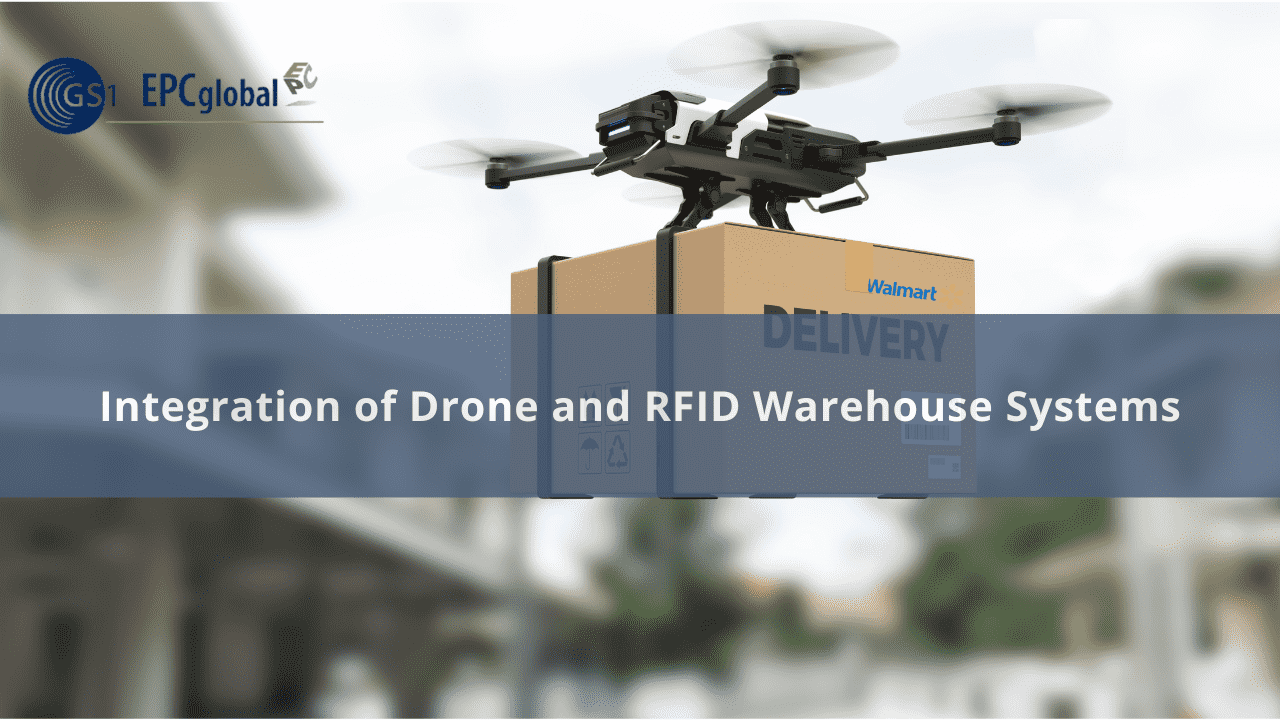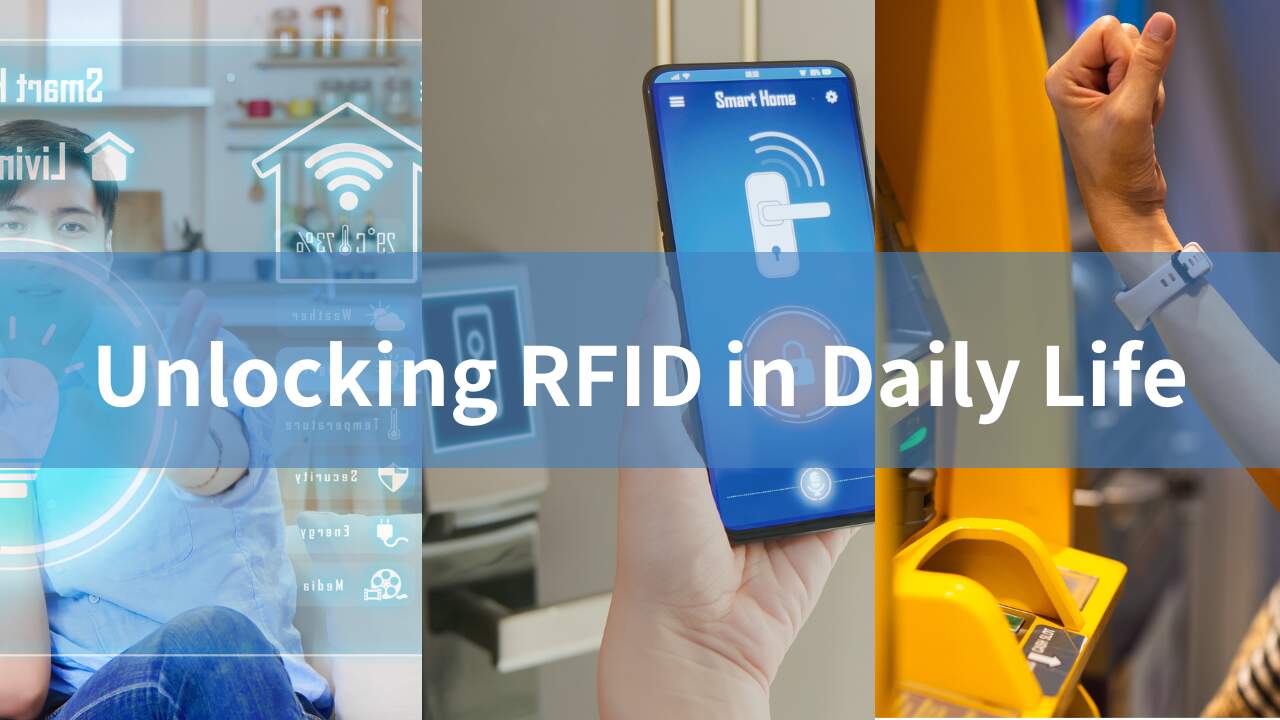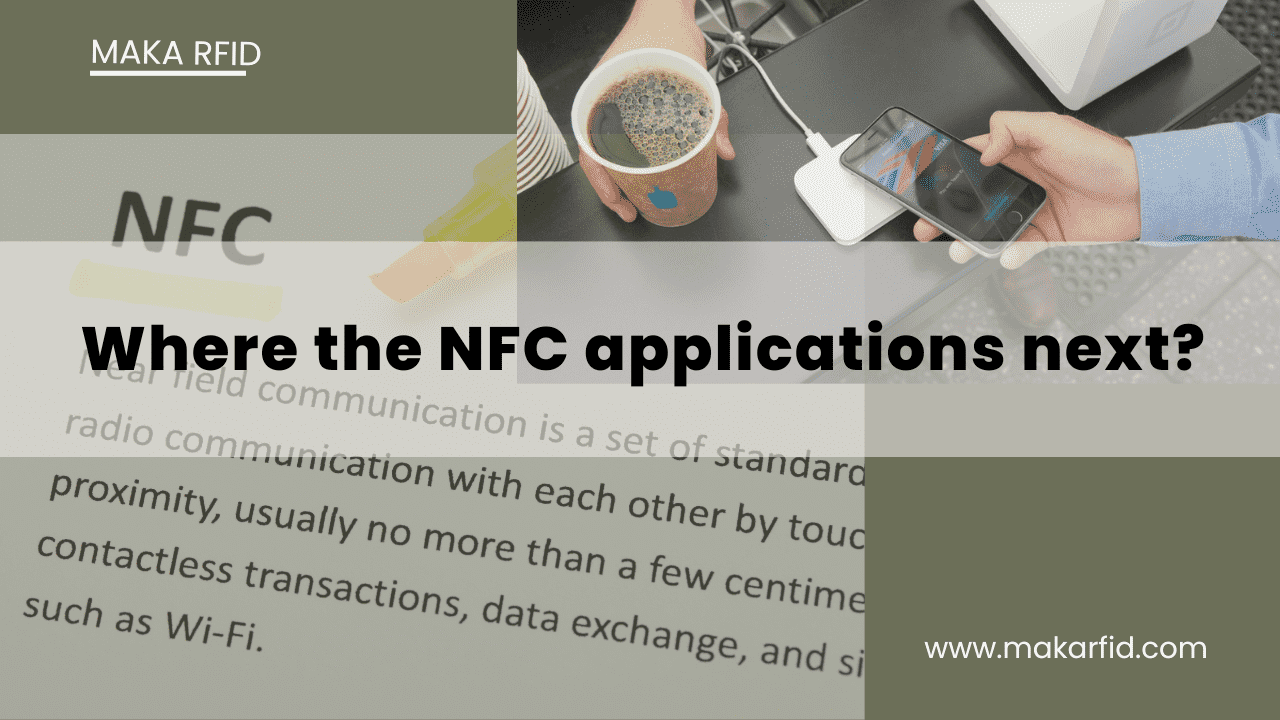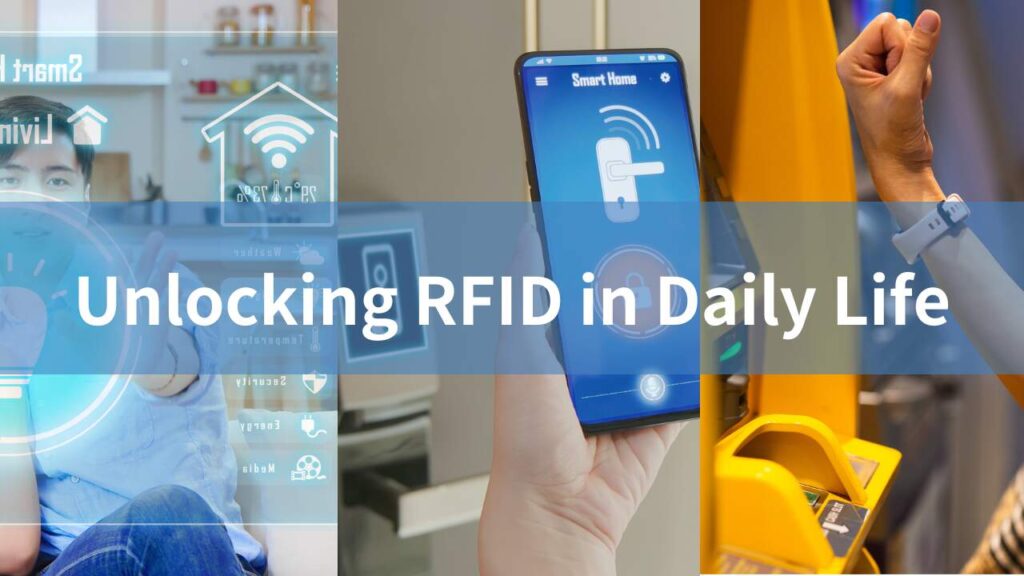
RFID in Everyday Technology: Revolutionizing Everything from Retail to Smart Homes
This blog provides a comprehensive introduction to the numerous applications of RFID technology in daily life. From enhancing retail experiences and streamlining logistics, to transforming modes of travel and boosting security, RFID technology is subtly altering our day-to-day existence. Its application in smart homes and healthcare is set to deliver unprecedented experience and convenience. Let’s explore how RFID technology influences and improves our daily lives!
RFID (Radio Frequency Identification) technology uses electromagnetic fields to automatically identify and track tags attached to objects, which have electronic information stored within them. This wireless, automatic data transmission and tracking method has made RFID an indispensable part of various daily technologies and has profoundly changed the way we interact with the world around us.
This blog will delve into the various applications of RFID in daily technology, these applications range widely, including enhancing retail experiences, simplifying logistics, revolutionizing transportation, and improving security, etc.
- EDC (Everyday Carry) Wallet
The EDC (Everyday Carry) wallet is a special daily item integrated with RFID technology. With the popularity of wireless payments and smart cards, protecting personal information from theft has become increasingly important. To solve this problem, EDC wallets often use RFID shielding technology to protect the user’s credit card and personal information from any form of potential theft attacks.
These wallets are equipped with a special protective layer that effectively blocks RFID signals from reaching the embedded cards, thereby ensuring the safety and peace of mind of the users.
- Enhance Retail Experiences
RFID technology has had a profound impact on the retail industry, greatly improving consumer shopping experiences. Retailers, by using RFID technology throughout the supply chain, can accurately track each item, thereby greatly improving their inventory management capabilities.
This not only ensures that popular goods are always available for sale, reducing customer disappointment, but also improves the accuracy of sales strategies through data analysis. In addition, RFID-enabled automated checkout systems can achieve faster and more accurate transaction processes, reducing customer waiting times, thereby greatly improving customer satisfaction.
- Simplify Logistics and Supply Chain
In the field of logistics and supply chain management, RFID has been seen as an extremely valuable tool. By using RFID tags, companies can effectively monitor and manage their inventory. Automated tracking systems provide real-time visibility of goods, allowing companies to optimize supply chain operations. From warehouse management to transportation, and finally to delivery, RFID technology can simplify the entire process, reduce errors, and ensure timely delivery of goods. This not only improves logistics efficiency, but also saves a lot of costs for companies.
- Transportation Revolution
RFID technology has brought about a revolution in the transportation industry, changing the way we travel. For example, electronic toll collection systems (such as the widely used E-ZPass in the United States) allow vehicles to seamlessly pass through toll stations. RFID tags on vehicles can achieve automated efficient payments, users no longer need to fumble for cash or painfully wait in long queues. This technology greatly improves the convenience and efficiency of travel.
- Enhanced Security and Access Control
RFID technology plays a crucial role in enhancing the security and access control of various environments. For example, RFID-enabled access cards are commonly used in hotels, providing guests with convenient room access permissions. Compared with traditional keys, these access cards provide higher security, if the access card is lost or stolen, it can be easily disabled. In addition, RFID technology is widely used in electronic passports, which greatly improves the security and efficiency of passport control procedures during international travel.
- Efficient Waste Management
RFID has found innovative applications in waste management systems, improving the efficiency of waste disposal and promoting sustainable development. RFID tags attached to garbage bins allow municipal authorities to more effectively monitor and manage the garbage collection process. This technology, by optimizing garbage collection routes, ensures that bins are only emptied when necessary, thereby reducing costs and minimizing the impact on the environment as much as possible. In addition, RFID also helps with waste sorting and recycling, contributing to building a greener and more sustainable future.
- Profoundly Changing Healthcare
RFID technology has also made significant breakthroughs in the field of healthcare. RFID tags can be used to track and manage medical equipment, ensuring effective inventory management and reducing the risk of important equipment being misplaced. In addition, RFID-enabled medical wristbands help improve patient safety by accurately identifying individuals, reducing the likelihood of errors in treatment procedures and medication management. For example, in hospitals, RFID wristbands can ensure that patients receive accurate care when undergoing surgery or treatment, greatly reducing the risk of medical errors.
- Smart Home Automation
RFID technology has penetrated into the field of smart home automation, making the control of home appliances more convenient. Users can automate various home operations and settings by integrating RFID tags into household items (such as keys, smartphones, or wearable devices). For example, when you approach the front door with an RFID-tagged key, the door will automatically unlock, the lights will automatically turn on, and the thermostat will automatically adjust to your preferred temperature. The seamless integration of RFID technology with smart home systems greatly simplifies daily life, creating a more personalized and efficient living environment.
- Multiplayer Interaction and Competition
RFID technology can also enhance the multiplayer interaction and competitive experience in games. By equipping players with RFID-supported devices (such as bracelets or controllers), the game system can identify and track each player’s movements and positions. Players can interact with RFID-equipped devices to participate in cooperative or competitive games, getting a more immersive multiplayer gaming experience. This not only adds to the fun and interactivity of the games but also enhances the social and competitive aspects of gaming.
In general, RFID technology has become an indispensable part of daily technology and has thoroughly changed various industries, as well as our daily lives. From retail and logistics to transportation and security, the application scope of RFID is very wide and is still expanding. With the continuous advancement of technology, we can expect RFID to find innovative applications in more fields, bringing more convenience and efficiency to our lives. In the future, RFID technology will continue to have a profound impact on society, providing strong support for the digital transformation of various industries.
How big is the imagination space for NFC pairing?
The expanded application and development of Near Field Communication (NFC) technology in smart hardware
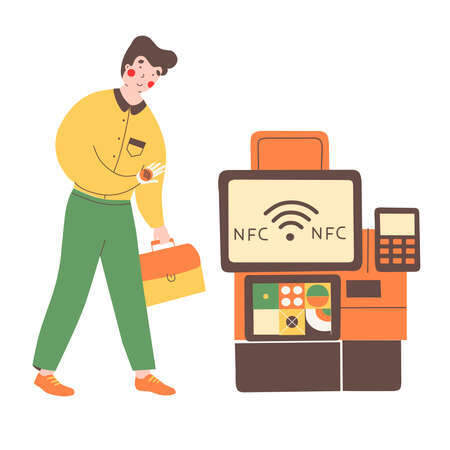
Today, with the continuous development of technology, Near Field Communication (NFC) technology has gradually expanded from its initial main use for mobile payments, bus cards, and access cards to a wider range of fields, especially in the application of smart hardware, becoming one of the unique features of many products.
Whether it’s speakers, refrigerators, televisions and headphones, or even car keys and other devices, NFC is present. Multiple brands and categories of smart devices are actively utilizing NFC technology to enhance user experience and product competitiveness. In this article, we will explore in detail the specific applications of NFC in various smart hardware, as well as its future integration and development prospects with other communication technologies.
NFC application in Xiaomi smart speakers
Xiaomi is one of the many brands that utilize NFC technology. It has integrated NFC functionality into its smart speakers, allowing users to start music transfer by touching the speaker with their phone’s NFC. This feature greatly simplifies the operation process and improves user convenience. Although Xiaomi’s smart speakers still maintain other connection methods, such as Xiaomi Miobiao, Bluetooth, voice commands, and AirPlay2, the addition of NFC undoubtedly provides users with more choices and a more convenient connection experience.
Ronshen refrigerator’s NFC control system
In the field of smart home appliances, many products from Ronshen refrigerators are equipped with an NFC control system, greatly facilitating user operation. Users only need to unlock their phones and turn on the screen, then use the phone’s NFC function to touch the NFC identification area of the refrigerator to obtain the APP download link for installation and device binding. In daily usage, if you need to quickly enter the refrigerator control page, you can do so by simply touching the NFC identification area, which is particularly suitable for users with many smart devices, saving the tedious search process.
NFC screen casting feature on TCL TVs
In the field of smart TVs, the NFC screen-casting feature launched by brands such as TCL is also eye-catching. To use this feature, users need to ensure that their phone and TV are connected to the same network, and that their phone’s Bluetooth and NFC functions are turned on. Then, while their phone is unlocked and the screen is on, they can touch the NFC function area of the TV remote control to complete the screen casting operation. This process is both quick and simple, significantly enhancing the user’s viewing experience.
Sony headphones and Huawei Tag’s NFC pairing
In the field of smart headphones, Sony headphones support NFC functionality. After turning on the smartphone’s NFC, users can touch the NFC area at the bottom of the headphone charging box with their phone to complete pairing and connection according to the prompts. In addition, Huawei’s Tag device also supports NFC touch connection, once again demonstrating the unique advantage of NFC in rapid device pairing and connection.
Deep Blue Car’s NFC digital car key
In the automotive field, Deep Blue Car announced in 2024 that it supports the digital car key feature for several smartphone models. These models include the HUAWEI nova 12 series, HUAWEI Pocket 2 series, certain Xiaomi models, and the HUAWEl Pura70 series. After successful card activation, users can unlock their vehicles through their phone’s NFC, providing a convenient digital car key solution that not only enhances the user experience, but also shows the important position of NFC in vehicle unlocking solutions.
Before the widespread adoption of Ultra-Wideband (UWB) technology, NFC and Bluetooth technologies have already been widely used in car key solutions. It is expected that the future will see the coexistence of BLE+NFC solutions, BLE+UWB+NFC solutions, and UWB+NFC solutions. Due to NFC’s ability to unlock without power when the phone is turned off, it will become the basis of all car unlocking solutions.
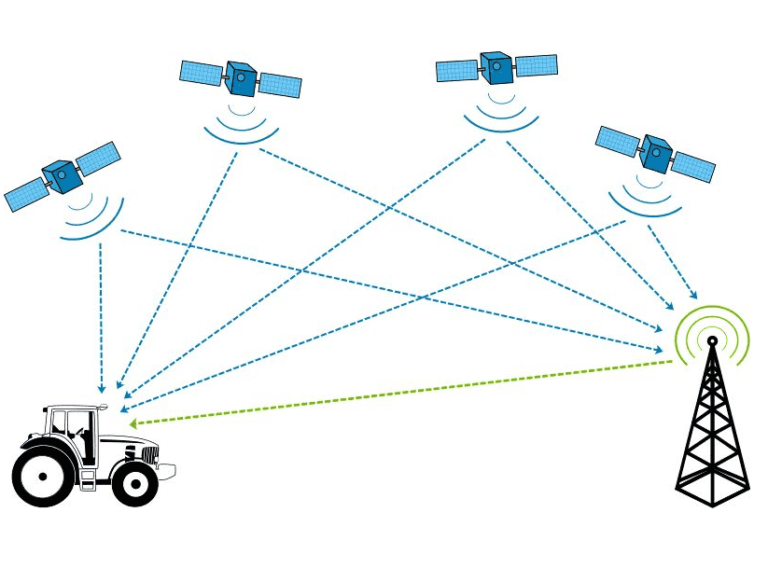
The integration and future prospects of NFC and Bluetooth
NFC is increasingly used in smart hardware. When discussing its future, it’s necessary to mention its relationship with Bluetooth technology. NFC is a short-range communication technology with a working frequency of 13.56MHz, a maximum transmission speed of 424Kbit/s, and a communication distance of about 10 centimeters. Bluetooth operates in the 2.4GHz frequency band, with a higher transmission speed and a range of up to 10 meters. In terms of transmission distance and speed, NFC and Bluetooth are incomparable.
However, it is precisely because NFC only needs a “touch” to establish communication that the industry is more hopeful that NFC can be used to simplify the process of Bluetooth pairing, or provide a variety of pairing connection choices, thus making product functions more differentiated. For example, users can use NFC to quickly pair Bluetooth devices, and then transmit data through Bluetooth, both achieving convenience and meeting the needs for efficient transmission.
The application of NFC technology in smart hardware has expanded from its initial use in payments and access control to a wider range of fields, involving speakers, refrigerators, TVs, headphones, car keys, and other devices. In the future, with the development of technology and the push of market demand, NFC is expected to play a big role in more products and scenarios. At the same time, the integration of NFC with other communication technologies such as Bluetooth will bring users a more convenient and efficient experience.


